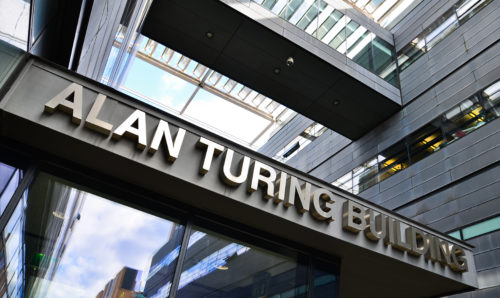Meet our academics – Prof Kody Law
Meet the Department 12th November 2018
In this series of blogs, we chat to the academics you’ll meet, be taught by and work with during your time in the School of Mathematics. In this post, we catch up with Chair in Applied Mathematics, Professor Kody Law. We asked him about his work and what he gets up to when he can tear himself away from his research.

Please can you describe your research, for the layman, in 10 sentences or less?
I would describe myself as a computational applied mathematician. Roughly speaking, I work mostly at the interface between models and data. Imagine a system that is fairly well-understood from a physical perspective, but there are various unknown parameters. Furthermore, the system is observed every so often, and one would like to infer the state of the system and its parameters in order to make predictions, and hence decisions. Some typical examples of such systems include atmosphere, ocean, and groundwater. Predictions may correspond to weather forecasts, contaminant transport or source inversion, and discovery of hydrocarbons in the ground. Computation is of course central to this line of research, and it is closely connected to many interesting applications, which is something that I highly value.
How are you finding Manchester so far?
It has been great so far. It is exciting to live in such a vibrant and growing city. I really enjoy the fact that the downtown and the University are walkable, and I find the people quite friendly and welcoming. It is an honour to work where Alan Turing worked and come to the office each day in a building which bears his name. I’m delighted to be a part of such a significant University and to have the opportunity to shape its growth and future.
How do you like to spend your time when you’re not working?
I like to go for long walks together with my partner, for example along the canals. We also enjoy taking in a concert or performance or visiting a museum. Travelling is another activity we enjoy, and we’re impressed by the beauty of Britain.
How did you begin your academic career in data assimilation?
My PhD at the University of Massachusetts in Amherst was in the area of bifurcation and stability analysis of non-linear wave (partial differential) equations. As a research fellow at the University of Warwick, I began to consider the problem of assimilating data into models, i.e. inverting differential equations to recover unknowns such as the initial condition and/or parameters. I adopt a statistical approach to the problem in order to quantify uncertainty, and from there I have developed a growing interest in methods and algorithms for computationally intensive statistical inference. These days my research focuses largely on the joint design and analysis of numerical algorithms for statistical inference in the context where the model which relates the data to the quantity of interest must be numerically approximated (for example most differential equations). Recently I have developed a growing interest in data-driven approaches to inference, where one aims to directly confront massive data sets, without relying on existing forward models.
What were you doing before coming to The University of Manchester?
Before coming here, I was working at Oak Ridge National Laboratory (ORNL), with a joint appointment at University of Tennessee, Knoxville, in TN, USA, nestled next to the Smoky Mountains. ORNL is a research institution driven by missions of the US Department of Energy (DOE), which leads to a very exciting trans-disciplinary research environment: for example, ORNL has the fastest supercomputer in the world, called Summit, and the only Spallation Neutron Source in USA, which is similar to ISIS at STFC Rutherford. Before TN I worked at King Abdullah University of Science and Technology in Saudi Arabia, which is another impressive research institution and graduate school, located on the Red Sea. It is home to the fastest supercomputer in the Middle East, and the first to make it into the top 10, called Shaheen II. I had a great experience at both places (and also the institutions of my PhD and postdoc), and developed many relationships and collaborations which will last forever. Moving around is difficult, but I strongly believe it is very important to growth and development. Now I am excited to be at the University of Manchester, and I am looking forward to building at the intersection of Applied Mathematics and Statistics here!
We’ll have a new academic interview for you on the blog soon.
alan turing buildingAppliedManchestermaths professormeet our academicsstatisticsuniversity




